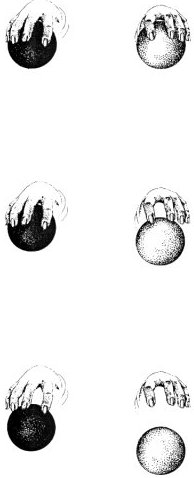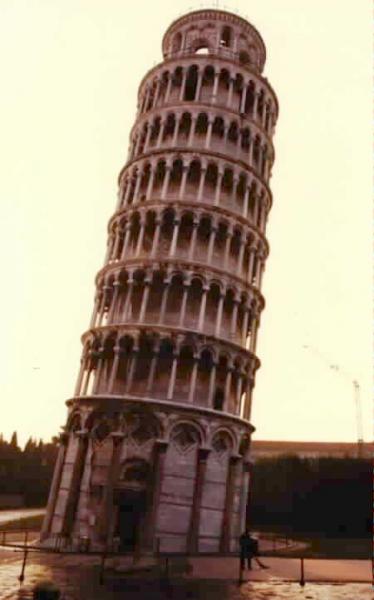Galileo's Experiment
Today, we ask how fast things fall, and we rewrite science. The University of Houston's College of Engineering presents this series about the machines that make our civilization run, and the people whose ingenuity created them.
When Galileo was young, one of his contemporaries used these words to describe Aristotle's idea of how objects fall:
There is a natural place for everything to seek, as:
Heavy things go downward, Fire upward,
And rivers to the sea.
 It was in the nature of falling, said Aristotle, that heavy objects seek their natural place faster than light ones -- that heavy objects fall faster.
It was in the nature of falling, said Aristotle, that heavy objects seek their natural place faster than light ones -- that heavy objects fall faster.
Galileo took an interest in rates of fall when he was about 26 years old and a math teacher at the University of Pisa. It seemed to him that -- with no air resistance -- a body should fall at a speed proportional to its density. He decided to test this modified Aristotelian view by making an experiment.
There was no tradition of describing experimental research in Galileo's day. Controlled experiments were almost unknown. So Galileo's report was pretty skimpy. He seems to have dropped different balls from a tower. But what weights? What tower? We can be pretty sure it was the Leaning Tower of Pisa. But we end up doubting whether or not he really did the experiment. Maybe he just reported what he thought should have happened.
One result of the experiment surprised Galileo, and one surprises us. Galileo found that the heavy ball hit the ground first, but only by a little bit. Except for a small difference caused by air resistance, both balls reached nearly the same speed. And that surprised him. It forced him to abandon Aristotelian ideas about motion. If he really did the experiment, it was surely a turning point in the history of science.
But what surprises us is what Galileo says happened just after he released the two balls. He says the lighter ball always started out a little bit faster than the heavy ball. Then the heavy ball caught up. That sounds crazy.
So Thomas Settle and Donald Miklich reran Galileo's tower experiment in front of a camera. An assistant held four-inch iron and wooden balls at arm's length -- as Galileo would have to have held them to clear the wide balustrate atop the Pisa tower. It turns out that when you try to drop them both at once, your strained muscles fool you. You consistently let go of the lighter one, the one you've been gripping less intensely, first. That means Galileo accurately reported what he seen happening. And we're left with no doubt that he actually did do the experiment.
Galileo went on to become the first real challenger of Aristotle. His tower experiment was no fable -- no apple falling on Newton's head. This was one of the first controlled scientific experiments. Like most of today's experiments, it was imperfect. But this experiment changed Galileo, and it changed history.
I'm John Lienhard, at the University of Houston, where we're interested in the way inventive minds work.
(Theme music)
Settle, T. B., Galileo and Early Experimentation, Springs of Scientific Creativity, (F. Aris, H.T. Davis, and R.H. Stuewer, eds.). Minneapolis: University. of Minnesota Press, 1983, pp. 3-20.

Photo by John Lienhard